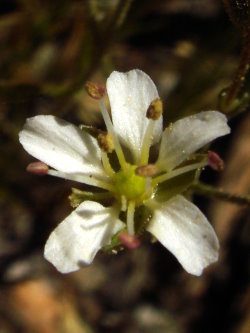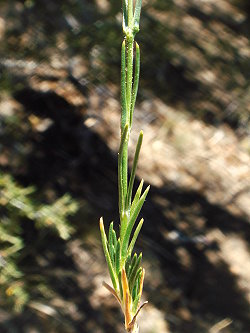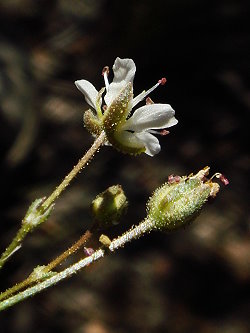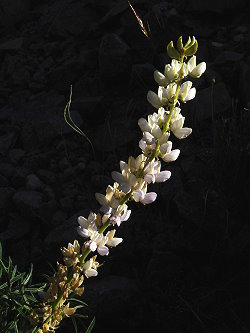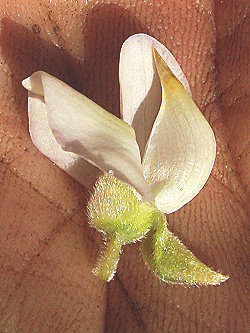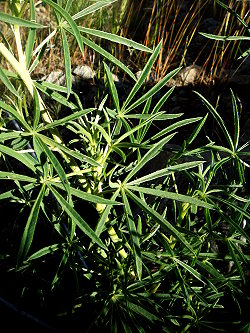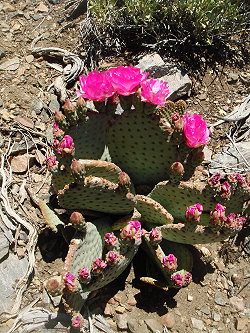| ONYX SUMMIT TO ONYX PEAK, SAN BERNARDINO MOUNTAINS JUNE 2016 PAGE ONE |
 |
Having not been in the San Bernardinos for four years, when I heard that Tom Chester was planning a botany excursion there I thought that this was a great opportunity to get some species that may not have been in my photo galleries for a while. I joined Tom, Walt Fidler and Nancy Accola for a hike beginning at Onyx Summit on Highway 38. At 8,843' Onyx Summit is the highest highway pass in Southern California. The gated fire road that leads from Onyx Summit to Onyx Peak is 2.9 miles long and crosses the PCT before gently rising to an elevation of 9,113', where there is some kind of an electronics facility. What is totally cool about this road is that it passes through a pebble plains area very much like that near Big Bear with many of the same species that are prevalent there. Another thing that is very interesting about this area is that it contains some of the oldest and largest junipers in Southern California. The temperature hovered between 78 and 80 all day with an intermittent cool breeze blowing. It was just getting dark as we returned to the cars. The San Bernardinos forest closure area resulting from the Lake Fire in June of 2015 and including Fish Creek, Big Meadows, South Fork Meadows, Grinnell Ridge, the Aspen Grove, Poopout Hill and trails to Mt. San Gorgonio, all places I have done photo galleries for, is still in place and in all likelihood will not be lifted this year. And speaking of fires, a horribly sad consequence of the Fish Fire just this past May was the burning of Fish Canyon above Azusa in the San Gabriels, one of the most historic and popular hiking destinations in our local mountains, and one of my favorite places which will probably be inaccessible to the public for many months if not years. The symbol ^ next to the common name indicates a taxon that was new to me when I photographed it on this field trip. |
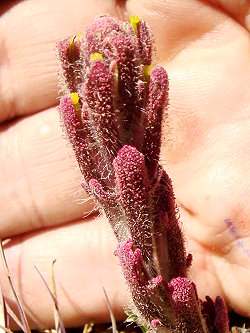 |
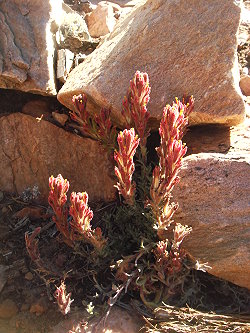 |
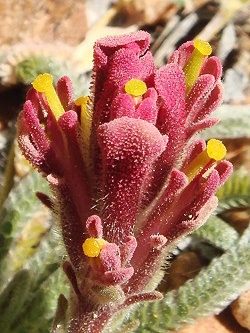 |
||
| Ashy-gray paintbrush Castilleja cinerea Orobanchaceae [Named for Domingo Castillejo Muñoz, 1744?-1793] |
||||
 |
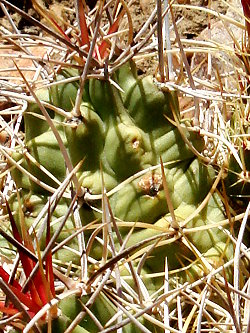 |
|
Mojave mound cactus Echinocereus mohavensis Cactaceae |
||
|
|
|
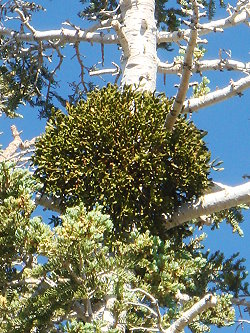 |
 |
|
| Bolle's mistletoe, Fir mistletoe Phoradendron bolleanum Viscaceae [Named for Carl August Bolle, 1821-1909] |
Juniper mistletoe Phoradendron juniperinum Viscaceae |
|
|
|
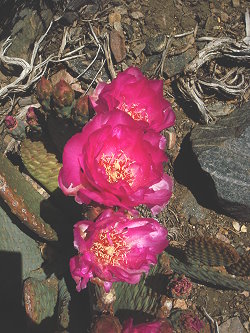 |
|
||
| Beavertail cactus Opuntia basilaris var. basilaris Cactaceae |
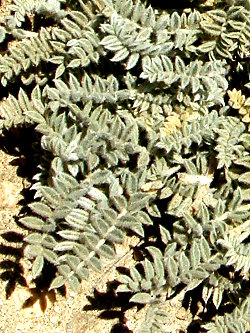 |
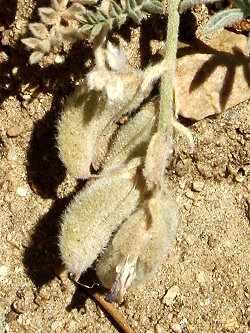 |
 |
||
| Bear Valley woollypod Astragalus leucolobus Fabaceae |
||||
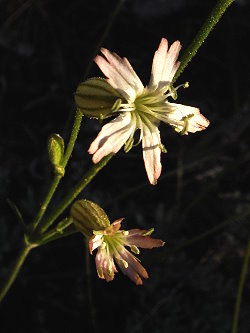 |
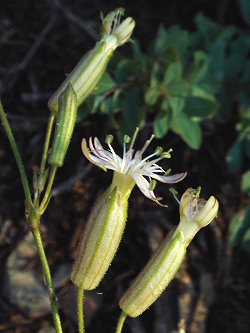 |
|
White catchfly Silene verecunda Caryophyllaceae [The name catchfly comes from the plant's sticky stems and calyces which may trap flies and other insects] |
||
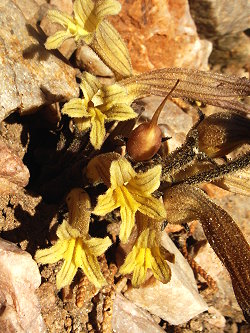 |
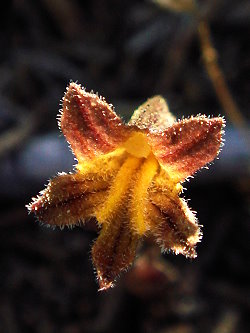 |
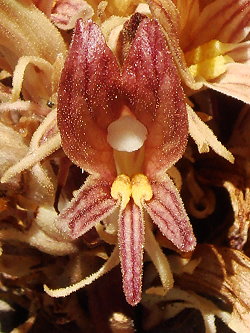 |
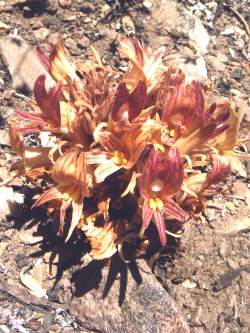 |
||||||
|
|||||||||
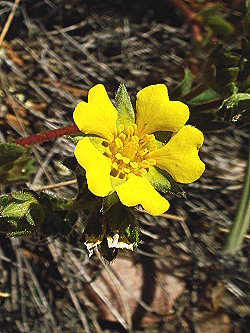 |
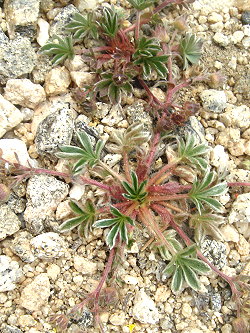 |
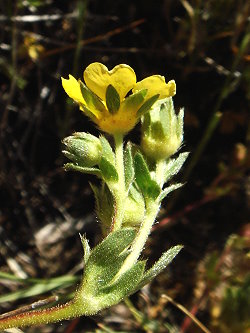 |
||
| Wheeler's cinquefoil Potentilla wheeleri Rosaceae [Named for George Montague Wheeler, 1842-1905] |
||||
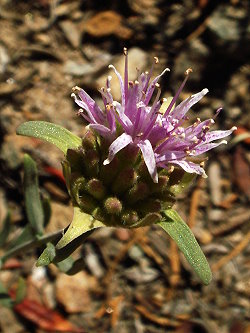 |
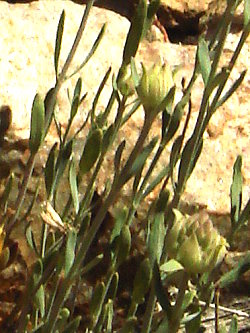 |
|
Narrowleaf monardella Monardella linoides ssp. stricta Lamiaceae [Considered by JM2 as a hybrid between M. australis ssp. australis and M. linoides ssp. erecta, common in the mountains of the Transverse Range] |
||
| PHOTO GALLERIES INDEX |
CALFLORA.NET | PAGE TWO OF FIVE |
| CALIFORNIA PLANT NAMES: LATIN AND GREEK MEANINGS AND DERIVATIONS | ||
| VIRGINIA PLANT NAMES: LATIN AND GREEK MEANINGS AND DERIVATIONS | ||
Copyright © 2016 by Michael L. Charters.
The photographs contained on these web pages may not be reproduced without the express consent of the author.
Comments and/or questions may be addressed to: mmlcharters[at]gmail.com.
